In this article we explain exactly what a framework is, why you need one and how they're structured.
Career frameworks, also known as career pathways and growth frameworks, outline what’s expected of an employee in their job right now as well as the paths for progression within their organisation, whether they be vertical or lateral.
Frameworks can also be used by managers as a diagnostic tool to identify strengths and weaknesses within their teams, and can help inform decisions on promotions alongside other factors like business need and impact.
With career frameworks you can:
-
Support a more structured onboarding process which outlines a new joiner’s responsibilities from the outset
-
Help everyone understand what’s expected of them in their position, and how this ties into organisation-wide values and goals
-
Create a more transparent and fair work environment — everyone’s on the same page, and clear on what they need to do to advance
-
Motivate teams to improve in the areas that matter most
-
Highlight internal mobility opportunities, whether they be vertical, lateral or ‘spiky’
-
Demonstrate your organisation’s commitment to development and increase the likelihood of your people sticking around
-
Give managers the confidence and clarity they need to support their teams effectively, identify opportunities for improvement and advocate for what their reports deserve.
Career frameworks can also be powerful recruitment tools, showcasing your organisation’s commitment to internal progression, and in turn attracting fresh talent keen to develop their skills and grow their career.
But what does a career framework actually look like?
You’ll have a framework for each team within your organisation. And within each team’s framework you’ll have three things; tracks, positions and skills.
Let’s take a closer look at each of those:
Tracks
Tracks break down a team into sections. Commonly, a team will have two tracks, Individual Contributor (IC) and Management, but it might also be broken down into disciplines, particularly for larger teams.
Tracks provide employees with a simple view of the different progression pathways within a team, whether they’re looking to move up in their existing track, or move across into another one. For example, a Product Designer in an IC track might consider moving vertically into a Senior position, or moving across to a Design Manager position within the management track.
Positions
Within Progression, a position is a job title within a team. Positions sit within tracks in order of seniority. The employees within your organisation should be assigned a position.
Skills
Every position within a framework is made up of skills. Skills are integral to your framework because they bring the responsibilities of a position to life, giving employees the clarity they need to progress and forming the criteria for managers to track, evidence and support growth. They may also be referred to as behaviours, competencies or abilities, but here at Progression we call them skills.
Typically, frameworks will have a mix of organisation-wide, team-wide and position-specific skills.
But regardless of the skill type, they all include three key things — a description, skill levels and examples.
1. Description
The description acts as an overview of the skill, helping everyone understand it at a glance.
2. Skill levels
Each skill has different skill levels, usually ranging from one to five. And each position in the team should be assigned a level of a skill. Skill levels matter because they explain what’s expected of someone in their current position, and what they need to demonstrate to progress or move into another position.
3. Examples
The best, most usable skills include examples, and we’d strongly recommend including them in yours. Examples are the observable behaviours of a skill level, making them actionable and leaving far less room for interpretation.
All of the skills in your framework will sit within a category. The most successful frameworks have three categories; Domain-specific skills, Core transferable skills and Leadership skills.
